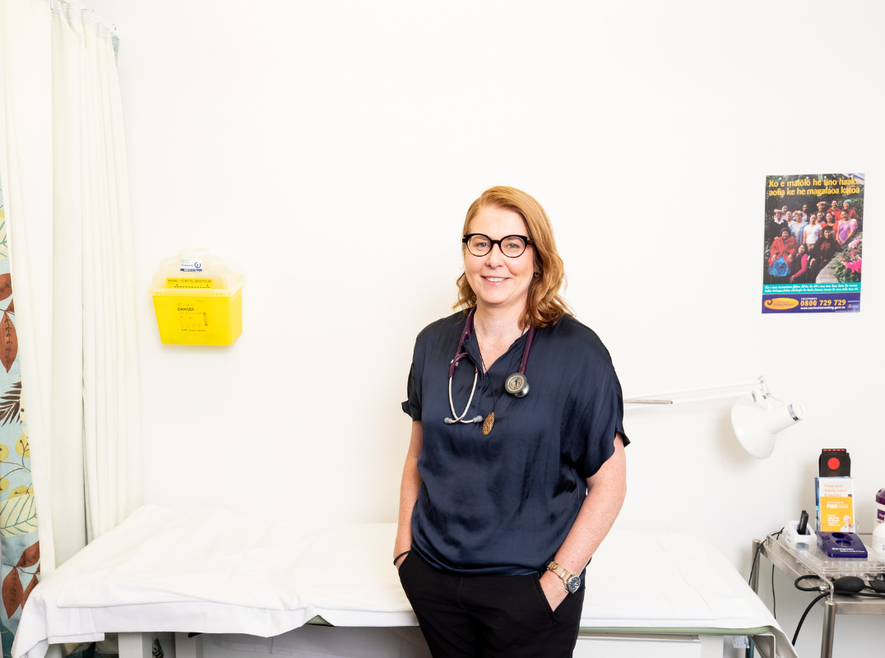6.1 Urgent – non-clinical
6.1 Urgent medical needs – non-clinical
Management of emergencies is an integral part of primary care. Being first contact care providers, the practice team may encounter any type of emergency.
| Standard - what we'll be assessing on | Evidence to provide for assessment |
|---|---|
|
The practice trains non-clinical team members to visually monitor all waiting areas and respond to urgent health needs. |
|
Urgent medical needs – non-clinical
Management of emergencies is an integral part of primary care. Being first contact care providers, the practice team may encounter any type of emergency. Acute attacks of asthma, myocardial infarction, anaphylactic shock, hypoglycaemic coma, convulsions, head injuries and trauma are some of the common emergencies encountered.
It's essential for practice teams to be skilled to manage these situations and be able to competently work together as a team. Being able to do this will reduce the stress of the event and provide the best outcome for patients.
The practice needs to design protocols and guidelines to assist the team when responding to urgent medical needs. This must include increasing triage priority for Māori due to their reduced access to healthcare and their higher health needs.
It's important that front-line team members understand their role in observing waiting patients and how to alert the clinical team members if they are concerned about a patient in the waiting room.
Ways the team can observe patients
- Direct observation
- Two-way windows
- Concave mirrors
- Closed circuit TV (consider privacy and CCTV issues)
The practice will need to think carefully about asking patients to wait in secondary waiting areas, distant from the main waiting area. How will the team detect a change in the condition of waiting patients in these areas?
How will the practice manage patients with urgent medical needs?
It's essential that the practice has a triage system in place to recognise and respond to an emergency. This will assist the team to monitor and assess patients, decide how urgent their illness or injury is and how soon treatment is required. The triage system will be managed by the clinical team.
Levels of timely access to care may be:
- Emergency – immediate
- Urgent – 20 minutes
- Interrupt doctor – as soon as possible
- Today – same day
- Within 24 hours

Training
Cardiopulmonary resuscitation (CPR) for non- clinical team members
Although it's desirable for many people within the team to be able to assist with CPR, it's not always essential for non-clinical team members to hold CPR certification. However, in some locations non-clinical team members may be required to initiate CPR or to assist at a medical emergency.
This may happen in solo and rural practices or where the reception team are working without any clinical team members available onsite (clinical team are on meal breaks or maybe the receptionist opens the medical centre before any clinical team are in the practice). In these situations, it is essential that non-clinical team members are certified in CPR.
Monitoring waiting areas
Non-clinical team members must be trained on how to identify critical signs and symptoms in patients attending the practice who may need more urgent medical attention.
Patients may present as unwell to the front desk, with or without an appointment, or may be sitting in the corner of a waiting room, quietly deteriorating. The front line team need to know how to identify someone who is need of urgent medical attention and how to identify a deteriorating patient and what action to take.
Training needs to reflect the practice’s internal triage process and include the signs and symptoms to observe, including monitoring the waiting area to observe for deterioration in patients and what to do. Correctly documented in-house training by a GP or nurse may be applied as evidence.
Annual clinical emergency drill
It's recommended that non-clinical team members receive some training or an education prior to the annual clinical emergency drills so they understand the clinical situation and their role is within the team.
The training session must also include what actions to take if patients are phoning the medical centre with medical emergencies, what actions to take and considerations around putting callers ‘on hold.
Preparing non-clinical team members to manage urgent health situations.
The practice needs to consider:
- Is the level appropriate?
- Does the practice have reference material available (e.g. posters, booklets, algorithms or flowcharts)?
- Is the reference material readily available and accessible?
- Do all relevant team members know where to find this information?
- Does the non-clinical team have definitions and responses for potential problems including (but not limited to):
- Pain
- Bleeding Slurred speech
- Altered level of consciousness
- Extreme concern
- Dehydration
- Fever
- Non-clinical team members must not diagnose the patient’s medical condition or make a clinical decision.
- Is the training non-diagnostic (based on presenting problems and how to arrange timely access to care)?
- Is the training comprehensive and patient focused to include self-care, first aid and/or ongoing monitoring?
- Does the training occur at least once a year?
- While it is not possible to cover every possibility that may arise, practices should try and cover as many possible situations as they can, especially those that may be specific to the practice and location (e.g. opens early, rural, isolated).